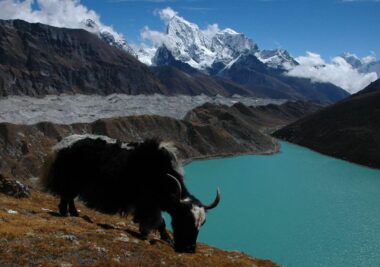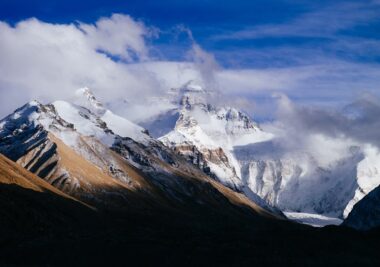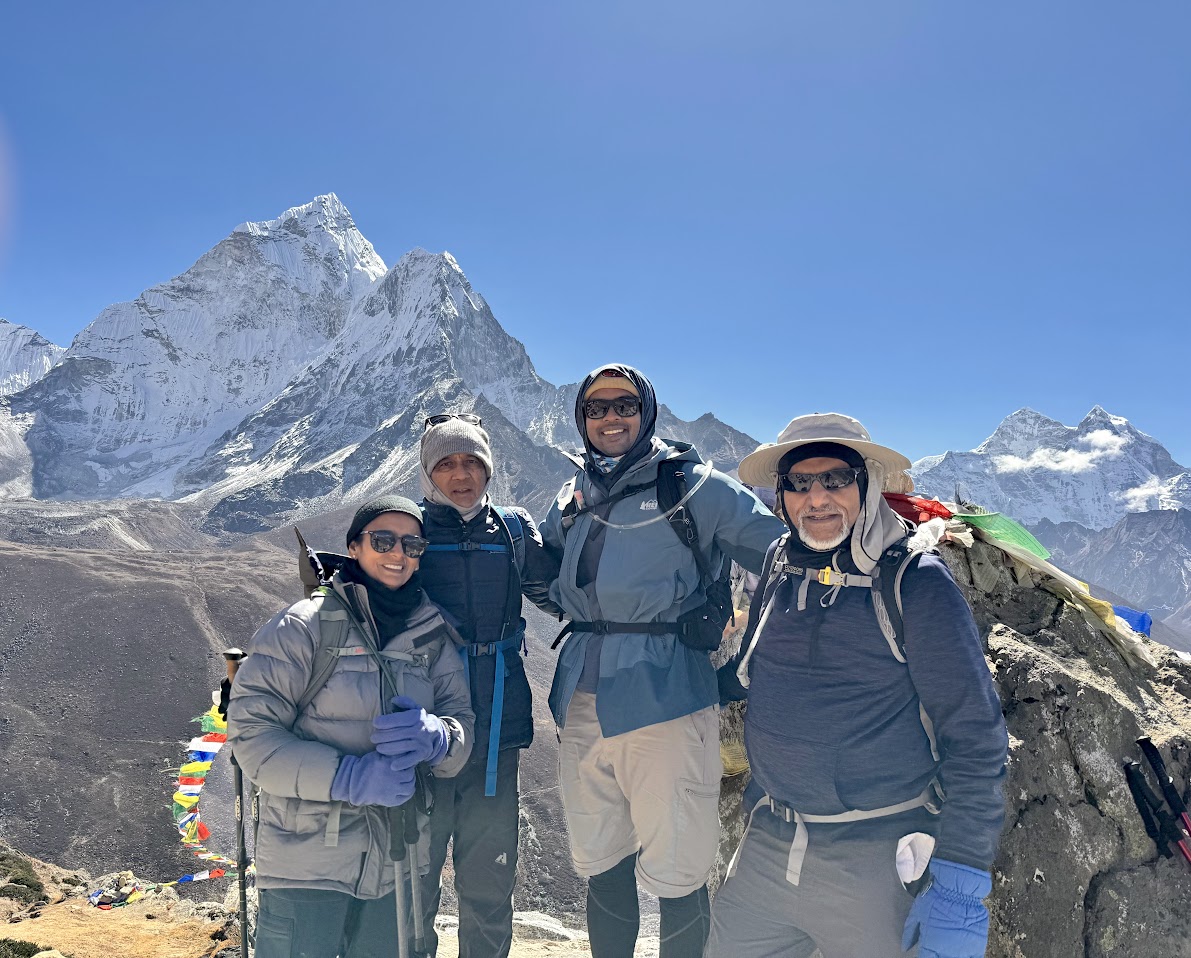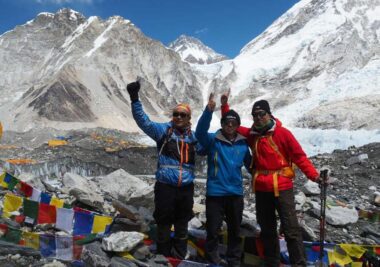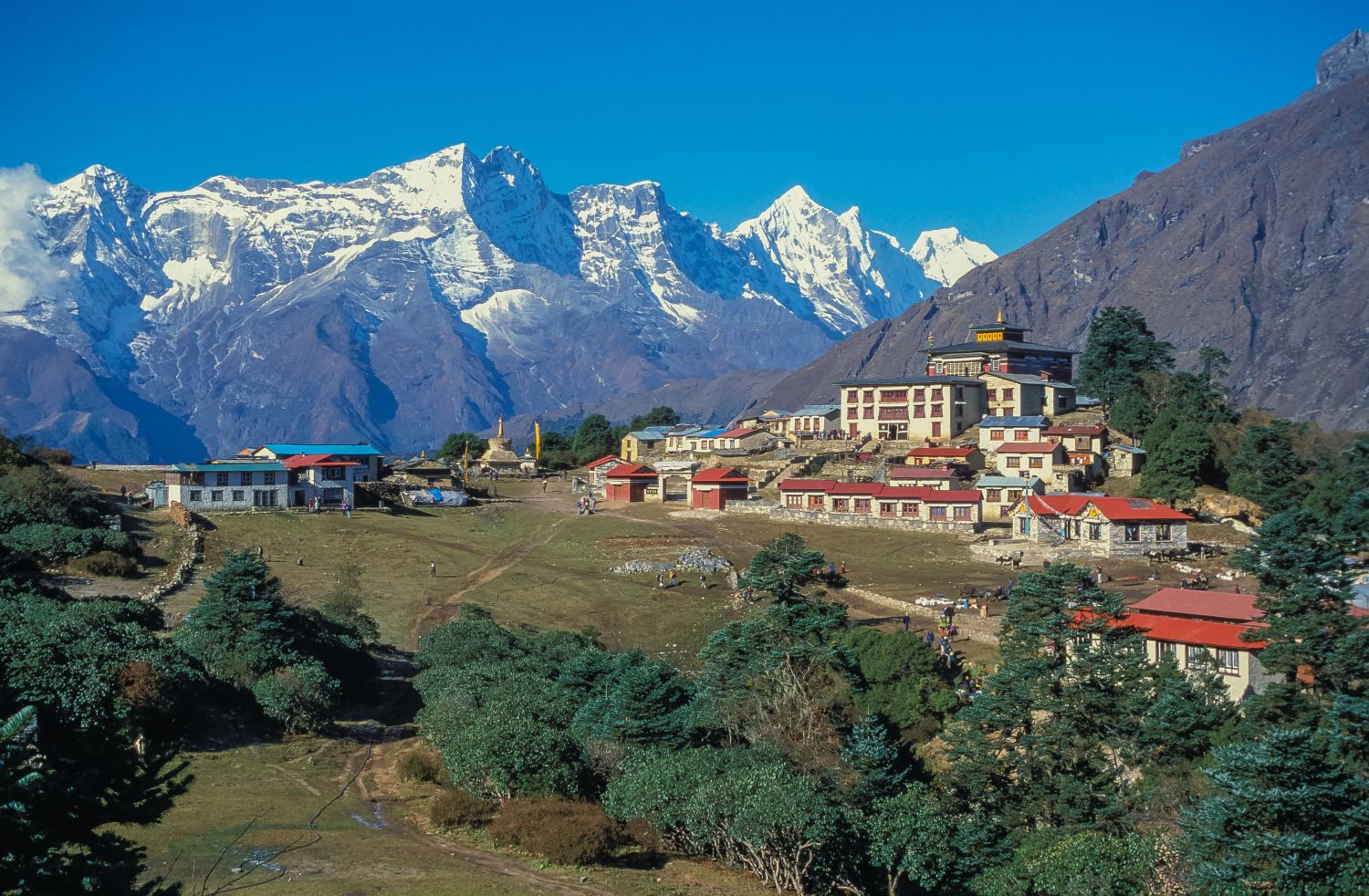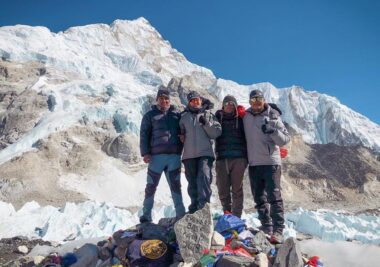Everest Trekking – A Once-in-a-Lifetime Adventure
Everest trekking is the ultimate adventure for thrill-seekers and nature lovers alike. Nestled in eastern Nepal, the Everest region lies entirely within Sagarmatha National Park, a UNESCO World Heritage Site since 1976. This stunning expanse spans over 1,148 square kilometers, rising from 2,845 meters (9,330 ft) to the world’s highest point, Mount Everest, at its official height of 8,848.86 meters (29,031.7 ft).
Mystical Landscapes and Sherpa Cultural Heritage
Mount Everest, locally known as Sagarmatha or “Goddess Mother of the World,” stands as a sacred symbol of strength and spirituality in the Himalayas. Trekking through this region reveals a tapestry of mystical landscapes and profound Sherpa heritage. Trekkers encounter towering neighboring giants such as Lhotse (8,516m), Nuptse (7,861m), Ama Dablam (6,812m), and Cho Oyu (8,188m), each forming a dramatic skyline that evolves with every step. Panoramic viewpoints like Kala Patthar (5,545m), Gokyo Ri (5,357m), and Chhukung Ri (5,546m) offer breathtaking vistas that stir both awe and reflection.
Sherpa Cultural Heritage
Along the Everest trail, peaceful Buddhist monasteries serve as spiritual sanctuaries. Tengboche (3,860m), perched on a ridge with Everest in view, and Pangboche (3,985m), nestled beneath towering cliffs, are places where prayer flags flutter and monks chant ancient mantras, infusing the air with tranquility and reverence. The journey also winds through vibrant Sherpa villages like Namche Bazaar (3,440m), the bustling gateway to Everest; Khumjung (3,790m), home to the famed Hillary School; and Dingboche (4,410m), a high-altitude settlement. In these communities, trekkers experience warm hospitality, traditional yak-herding culture, and deep-rooted Tibetan Buddhist traditions that make the Everest trek not only a physical challenge but a profound cultural and spiritual immersion.
Discover the Popular Treks in the Everest Region
The Everest region offers a wide range of popular routes to suit various interests and durations. The most famous is the Everest Base Camp Trek. Other routes include the Gokyo Lakes Trek, the challenging Three Passes Trek, and shorter options like the Everest Panorama Trek or Everest View Trek. More extensive routes, such as the classic starting point of the Jiri to Everest Base Camp Trek or the high-altitude expedition of Makalu to Everest via Sherpani Col, are available for the most adventurous.
Meals, Drinks, and Lodging on the Trekking Trail
During Everest trekking, travelers typically stay in teahouses—basic yet cozy accommodations found along the trail. These offer simple twin beds, warm communal dining halls, and hearty meals like dal bhat, Tibetan bread, and Sherpa stew. In lower-altitude villages such as Lukla and Namche Bazaar, more comfortable lodges and luxury options often provide amenities like private bathrooms and hot showers. Food ranges from traditional Nepali dishes to familiar Western options like pancakes, pasta, and fried rice, with drinks like ginger lemon honey tea and garlic soup being popular for warmth and altitude relief.
For those craving untamed natural beauty and a truly transformative journey, Everest trekking delivers one of the world’s most unforgettable adventures, where towering peaks, spiritual trails, and meaningful connections combine to create memories that last a lifetime.

